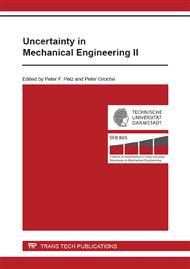p.162
p.169
p.183
p.195
p.205
p.218
p.229
p.241
p.247
Developing a Control Strategy for Booster Stations under Uncertain Load
Abstract:
Booster stations can fulfill a varying pressure demand with high energy-efficiency, because individual pumps can be deactivated at smaller loads. Although this is a seemingly simple approach, it is not easy to decide precisely when to activate or deactivate pumps. Contemporary activation controls derive the switching points from the current volume flow through the system. However, it is not measured directly for various reasons. Instead, the controller estimates the flow based on other system properties. This causes further uncertainty for the switching decision. In this paper, we present a method to find a robust, yet energy-efficient activation strategy.
Info:
Periodical:
Pages:
241-246
Citation:
Online since:
November 2015
Authors:
Price:
Сopyright:
© 2015 Trans Tech Publications Ltd. All Rights Reserved
Share:
Citation:


